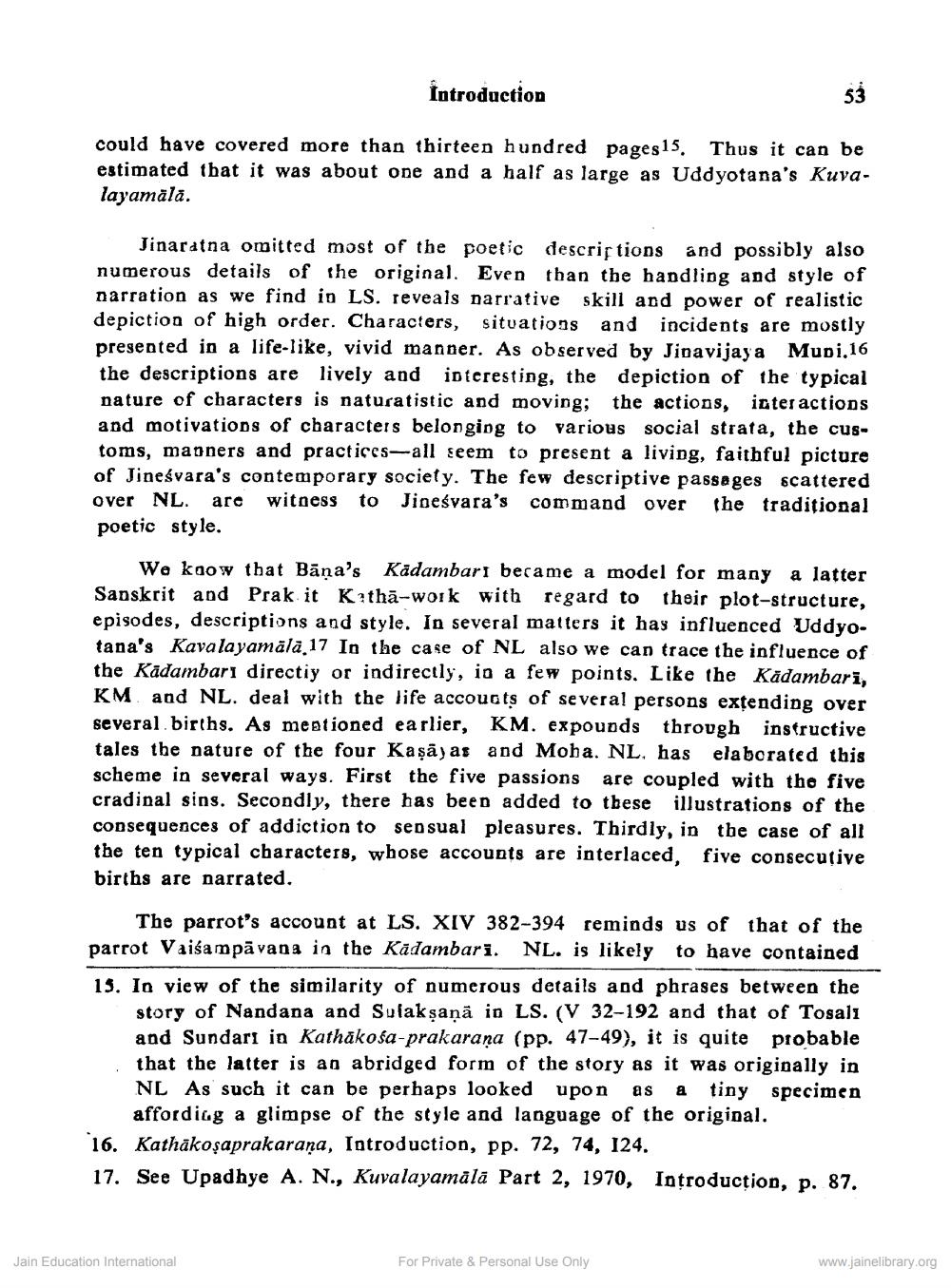________________
Introduction
could have covered more than thirteen hundred pages15. Thus it can be estimated that it was about one and a half as large as Uddyotana's Kuvalayamālā.
Jinaratna omitted most of the poetic descriptions and possibly also numerous details of the original. Even than the handling and style of narration as we find in LS. reveals narrative skill and power of realistic depiction of high order. Characters, situations and incidents are mostly presented in a life-like, vivid manner. As observed by Jinavijaya Mupi. 16 the descriptions are lively and interesting, the depiction of the typical nature of characters is naturatistic and moving; the actions, interactions and motivations of characters belonging to various social strata, the customs, maoners and practices-all seem to present a living, faithful picture of Jineśvara's contemporary society. The few descriptive passages scattered over NL. are witness to Jineśvara's command over the traditional poetic style.
We kaow that Bāna's Kadambari became a model for many a latter Sanskrit and Prak it Kathā--work with regard to their plot-structure, episodes, descriptions and style. In several matters it has influenced Uddyotana's Kavalayamala 17 In the case of NL also we can trace the influence of the Kadambari directiy or indirectly, in a few points. Like the Kādambarī, KM. and NL. deal with the life accoucts of several persons extending over several births. As mentioned earlier, KM. expounds through instructive tales the nature of the four Kaşay as and Moha. NL, has elaborated this scheme in several ways. First the five passions are coupled with the five cradinal sins. Secondly, there has been added to tbese illustrations of the consequences of addiction to sensual pleasures. Thirdly, in the case of all the ten typical characters, whose accounts are interlaced, five consecutive births are narrated.
The parrot's account at LS. XIV 382-394 reminds us of that of the parrot Vaišampāvana in the Kadambari. NL. is likely to have contained
15. In view of the similarity of numerous details and phrases between the
story of Nandana and Sulakşaņā in LS. (V 32-192 and that of Tosalı and Sundari in Kathakosa-prakarana (pp. 47-49), it is quite probable that the latter is an abridged form of the story as it was originally in NL As such it can be perhaps looked upon as a tiny specimen
affording a glimpse of the style and language of the original. 16. Kathäkoșaprakarana, Introduction, pp. 72, 74, 124. 17. See Upadhye A. N., Kuvalayamālā Part 2, 1970, Introduction, p. 87.
Jain Education International
For Private & Personal Use Only
www.jainelibrary.org




